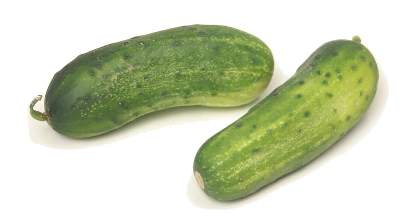All Ingredients
Kashmiri red chili powder
This mild Kashmiri chili powder is used in Indian cooking to add flavor and color.
Learn morekassler rippchen
German delis sometimes stock these pre-sliced smoked pork chops. They're fully cooked.
Learn morekecap manis
This thick, dark sauce is the Indonesian ancester of ketchup. Look for it in Indonesian markets.
Learn moreKefalotyri
This tangy hard Greek cheese is often grated over dishes. This can be made from sheep’s milk, goat’s milk or both.
Learn morekefir
Kefir is like a thin, drinkable yogurt. It was originally made in Turkey out of camel's milk. It comes plain or flavored.
Learn morekershaw squash
Kershaw squash is an heirloom squash. It is mostly grown in the American south. Kershaw squash was cultivated by native Americans.
Learn moreketchup
Ketchup is a common condiment especially in America. It is made with tomatoes, sugar, vinegar and spices.
Learn morekewra essence
This concentrated oil is made from male pandanus (screwpine) flowers, and it's used to flavor meats, desserts, and beverages in India and Southeast Asia. Look for tiny bottles of it in Indian and Asian markets. Don't confuse it with kewra water, which isn't nearly as potent
Learn morekewra water
This is an extract that's distilled from pandanus flowers, and used to flavor meats, drinks, and desserts in India and Southeast Asia. Some brands of kewra water are artificially flavored, so check the label.
Learn morekey lime juice
Freshly squeezed lime juice is vastly superior to what you'll find in bottles. Key limes and bottled key lime juice are widely available in the Southeast, and in specialty markets elsewhere. Liquor stores sometimes carry Rose's lime juice, which is sweetened key lime juice.
Learn morekhmeli suneli
Khmeli suneli is a traditional Georgian spice mix. It usually contains some combination of coriander, basil, celery seed, parsley, fenugreek, summer savory, mint, bay leaves, dill, cloves and parsley. Khmeli suneli is used to flavor sauces and stews.
Learn morekidney bean
This is a family of sweet kidney-shaped beans that comes in different sizes and colors. Varieties include cannellini beans, flageolets, and red kidney beans.
Learn morekidneys
Kidneys are nutritious and, if properly prepared, delicious. It's often hard to find them in markets, though, since many of them are ruined during the meat inspection process. Veal kidneys and lamb kidneys are prized for their tenderness and delicate flavor. They can be grilled or sautéed, though they become tough if overcooked. Pork and beef kidneys are tougher, and need to be cooked slowly using moist heat.
Learn morekielbasa
Kielbasy are smoked Polish sausages made with pork and/or beef and flavored with garlic, pimento, and cloves. They come already cooked, but most people heat them before serving.
Learn morekim chee
This Korean specialty is made with cabbage, vinegar, garlic, and hot chile peppers, all of which are put into jars and allowed to ferment. It's spicy and very good.
Learn morekimia dates
These dark kimia dates are grown widely in southern Iran. They are moist and soft.
Learn moreKirby cucumber
This short, versatile cucumber is used for both slicing and pickling. It's small, with bumpy yellow or green skin. Like the English cucumber, it has a thin skin and inconspicuous seeds.
Learn morekirsch
This colorless cherry brandy is made primarily in Germany. French kirsch isn't quite as dry.
Learn morekishimen
These are flat and slippery Japanese wheat noodles. They're served both hot and cold.
Learn morekishke
This Jewish specialty consists of beef intestines stuffed with matzo meal, onion, and suet.
Learn morekiwano
This melon has a gorgeous orange rind with spikes--poke a stick in it and you'd have a medieval mace for a Halloween costume. The yellow-green flesh has the consistency of jello, and tastes a bit like cucumbers.
Learn morekiwi fruit
This small, oblong fruit is has fuzzy brown skin and beautiful green flesh dotted with edible black seeds. It tastes like a cross between gooseberries and strawberries. It's very versatile--you can eat it as a snack, blend it into sauces or sorbets, or peel and slice it as a garnish. It also contains an enzyme that tenderizes meat. Select kiwis that are hard, and allow them to ripen at room temperature for a few days.
Learn moreknackwurst
These smoked beef sausages are seasoned with lots of garlic. They should be cooked before eating, and they're often served like hot dogs or smothered in sauerkraut.
Learn morekohlrabi
A kohlrabi resembles a turnip, only it's sweeter and more delicately flavored. It's light green and sometimes sold with its edible greens attached. It can be eaten raw or cooked. Choose small ones, and peel before using.
Learn morekohlrabi greens
These can be cooked just like Swiss chard. Remove the stems first if they're too thick.
Learn morekoji mold
Koji is the mold used to make koji foods like koji rice, other grains and soy beans. It is can also used to make sake.
Learn morekoji rice
Koji rice is made by fermenting rice with the koji mold (Aspergillus oryzae). It is an ancient practice stated in japan over 1000 years ago. The koji fungus can also be added to grain and beans. Koji rice is often used in brewing sake.
Learn morekokum
This Indian souring agent is made from dried mangosteen peels. It's often used in fish dishes. Look for it in Indian markets.
Learn morekola nut
These bitter nuts are loaded with caffeine, and Africans like to chew on them throughout the day. One downside is that they turn your teeth orange.
Learn morekolbasz
This Hungarian sausage is similar to Polish kielbasa, except that it has paprika added to it.
Learn more








































































































































































































































































































































.jpg)





































